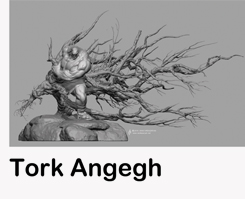Music » Chamber » "Tork Angegh" - 5 movements

Piano 4 hands
5 movement
This music is published by ‘’Armenian National Music inc.’’
Performed at ‘’ Komitas Museum’’ in Armenia.
Performers; Anahit Dilbaryan / Lika Zakaryan pianists
The full income of this publication goes to help the wounded soldiers from the last war in Artsakh.
Thank you
Petros Shoujounian
Composer
‘’Tork Angegh’’
In Armenian: Տորք Անգեղ is an ancient associated Armenian male
deity to strength, courage, craftsmanship and artistry.
It is also called Torq or Durq. Creature of supernatural strength and power,
Tork was considered one of Hayk's great-grandsons and was reportedly portrayed as an unattractive male figure.
He is mentioned by the 4th century Armenian historian Movses Khorenatsi and considered one of the significant deities of the Armenian pantheon before the time when it was influenced by Iranian and Hellenic religion and mythology.
Taken in the context of Proto-Indo-European religions, there is the hypothesis of an etymological connection with the Norse god Thor.
An analogy is often made with the Middle Eastern god Nergal, also depicted as an unattractive man.
This music is based on the folksong collection of the Armenian priest Komitas, known as the founder of the Armenian national school of music and one of the pioneers of ethnomusicology.
Petros Shoujounian
‘’Tork Angegh’’
En arménien : Տորք Անգեղ est une ancienne divinité mâle arménienne associée à la force, au courage et à l'art.
Il est également appelé Torq ou Durq. Une créature à la force et au pouvoir surnaturels, Tork était considéré comme l'un des arrière-petits-fils de Hayk et aurait été dépeint comme une figure masculine peu attrayante.
Il est mentionné par l'historien arménien du IVe siècle Movses Khorenatsi et considéré comme l'une des divinités importantes du panthéon arménien avant l'époque où celui-ci a été influencé par la religion et la mythologie iraniennes et helléniques.
Dans le contexte des religions proto-indo-européennes, il existe une hypothèse de lien étymologique avec le dieu nordique Thor.
Une analogie est souvent faite avec le dieu Nergal du Moyen-Orient, également représenté comme un homme peu séduisant.
Cette musique est basée sur la collection de chansons folkloriques du prêtre arménien Komitas, connu comme le fondateur de l'École nationale de musique arménienne et l'un des pionniers de l'ethnomusicologie.
Petros Shoujounian
Click here to download the score

 Watch the video here
Watch the video here Watch the video here
Watch the video here Watch the video here
Watch the video here Watch the video here
Watch the video here Watch the video here
Watch the video here